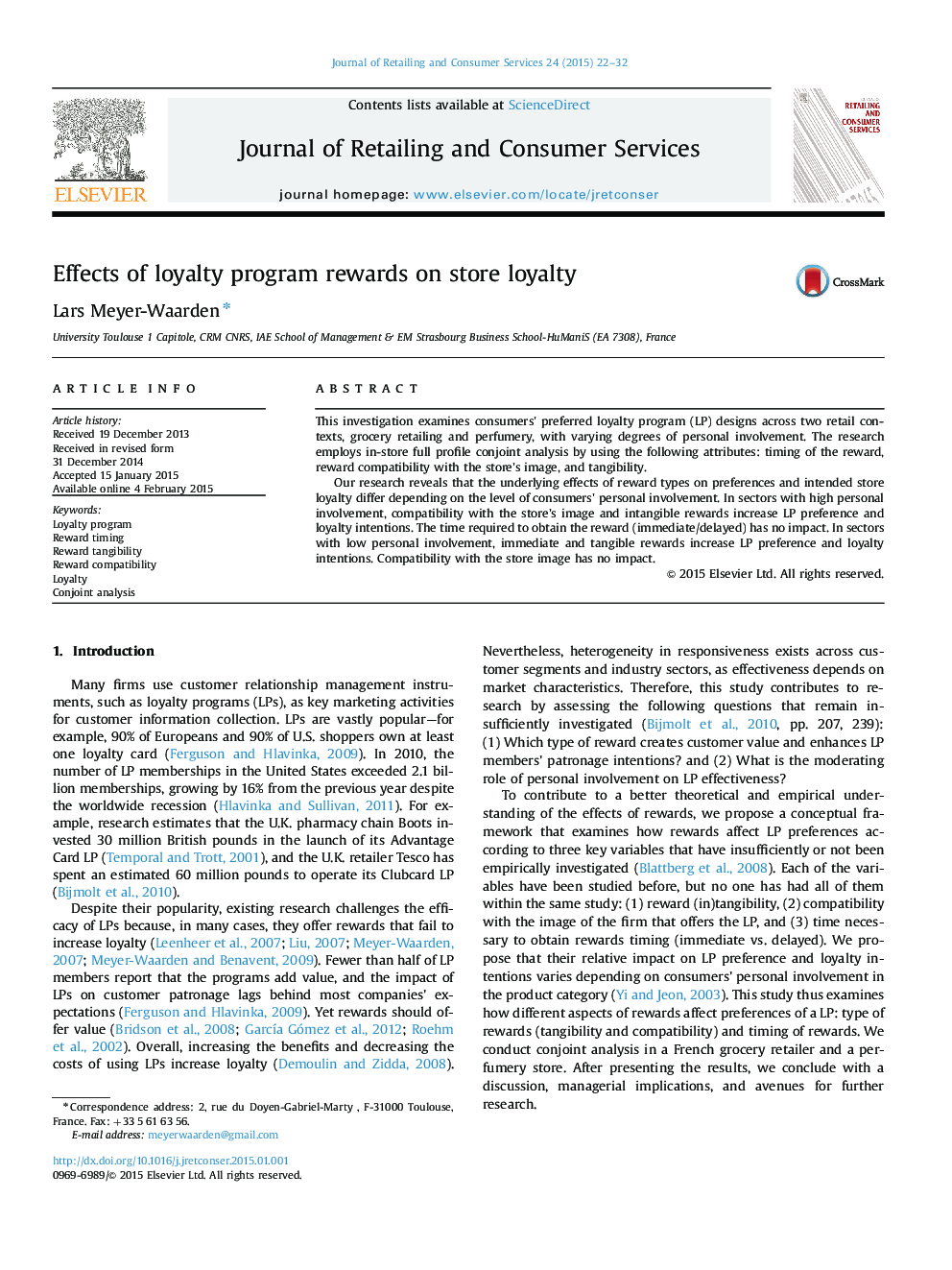| Article ID | Journal | Published Year | Pages | File Type |
|---|---|---|---|---|
| 1028811 | Journal of Retailing and Consumer Services | 2015 | 11 Pages |
•This investigation examines consumers’ preferred loyalty program designs.•It investigates two retail contexts (grocery/perfumery), with varying degrees of involvement.•It uses the timing of the reward, compatibility with the store’s image, tangibility as design factors.•Under strong involvement:○compatibility with the store’s image and intangible rewards increase LP utilities and loyalty.○time required to obtain the reward (immediate/delayed) has no impact.•Under weak involvement:○immediate and tangible rewards have greater utilities and result in increased loyalty.○compatibility with the store image has no impact.
This investigation examines consumers' preferred loyalty program (LP) designs across two retail contexts, grocery retailing and perfumery, with varying degrees of personal involvement. The research employs in-store full profile conjoint analysis by using the following attributes: timing of the reward, reward compatibility with the store's image, and tangibility.Our research reveals that the underlying effects of reward types on preferences and intended store loyalty differ depending on the level of consumers' personal involvement. In sectors with high personal involvement, compatibility with the store's image and intangible rewards increase LP preference and loyalty intentions. The time required to obtain the reward (immediate/delayed) has no impact. In sectors with low personal involvement, immediate and tangible rewards increase LP preference and loyalty intentions. Compatibility with the store image has no impact.
